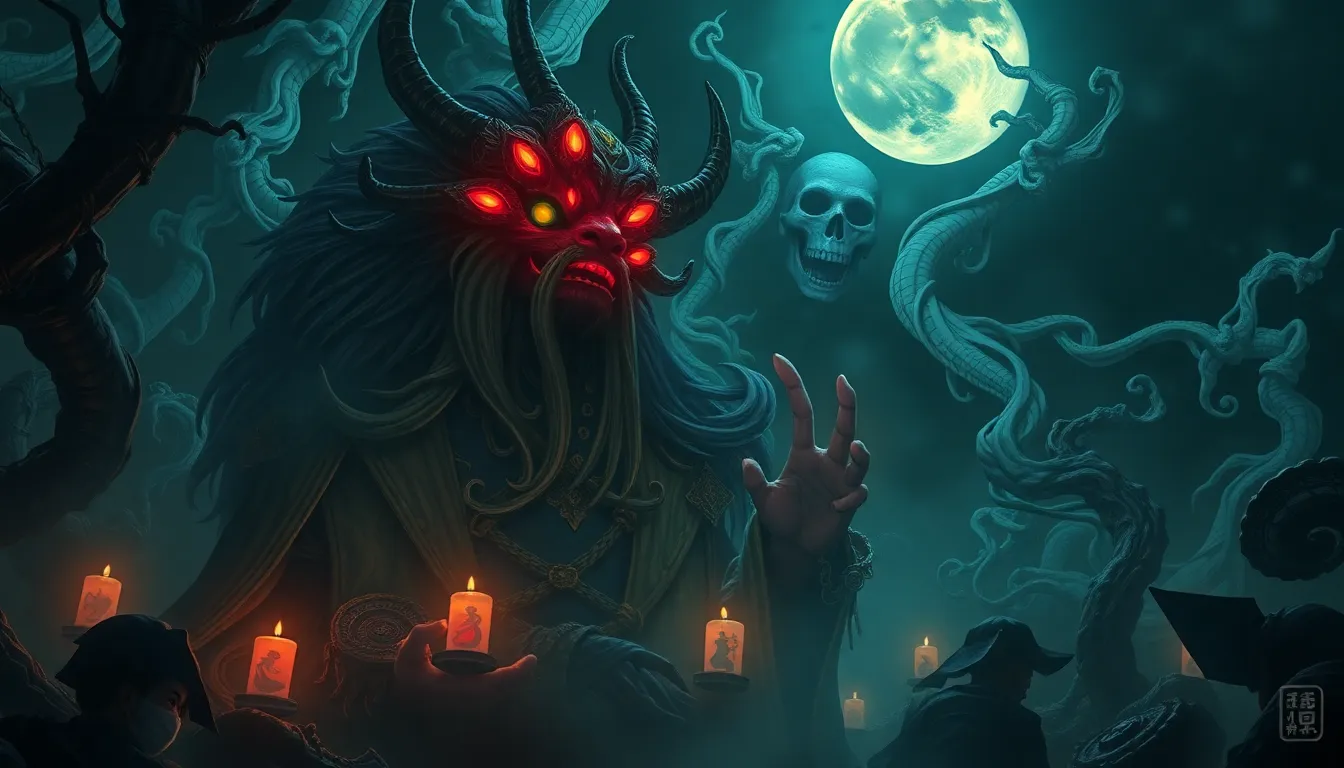Wendigo and the Wild: How this Myth Reflects the Power and Beauty of the Wilderness
I. Introduction
The Wendigo is a captivating figure in North American folklore, particularly among Indigenous cultures of the Algonquian-speaking tribes. This mythological creature, often depicted as an emaciated humanoid with an insatiable hunger, serves as a powerful symbol of the wilderness and the complex relationship that humans have with it.
The wilderness holds a significant place in Indigenous cultures, representing not only a source of sustenance but also a realm filled with spiritual meanings and teachings. This article aims to explore the connection between the Wendigo and the natural world, highlighting how this myth reflects the power and beauty of the wilderness.
II. The Origins of the Wendigo Myth
The origins of the Wendigo myth are deeply rooted in the history and culture of Indigenous peoples. Historically, the Wendigo legend emerged during times of extreme scarcity, particularly during harsh winters when food was scarce, and survival was threatened.
There are various interpretations of the Wendigo across different Indigenous tribes. For instance:
- Among the Ojibwe, the Wendigo is often seen as a spirit that embodies gluttony and excess.
- In the Cree tradition, it is considered a once-human creature transformed by the act of cannibalism.
- The Algonquin view portrays the Wendigo as a malevolent force that can possess individuals, driving them to madness and insatiable hunger.
This myth symbolizes not only the physical dangers of the wilderness but also the psychological struggles faced by individuals during times of scarcity.
III. The Wilderness: A Source of Inspiration and Fear
The wilderness is a dichotomy—both beautiful and dangerous. Its breathtaking landscapes and bounty of resources stand in stark contrast to its potential for perilous conditions and fierce wildlife. The Wendigo embodies the darker aspects of nature, representing the fear that comes from being lost or isolated in the wild.
In Indigenous storytelling, the wilderness is often portrayed as a character in its own right, filled with mysteries and lessons for those who dare to venture into its depths. The Wendigo serves as a reminder of the consequences of disrespecting nature and the balance that must be maintained.
IV. The Wendigo as a Reflection of Human Nature
The themes of greed and consumption are central to the Wendigo myth. The creature’s insatiable hunger can be interpreted as a metaphor for human excess and the destructive nature of greed. In modern psychological interpretations, the Wendigo represents the darker sides of human nature, where the desire for more leads to self-destruction.
There are striking parallels between the Wendigo’s hunger and contemporary societal issues such as:
- Overconsumption of resources.
- Environmental degradation.
- Societal inequalities driven by greed.
These themes encourage a reflection on our own behaviors and the impact they have on the world around us.
V. The Role of Nature in Indigenous Spirituality
In Indigenous belief systems, nature is not merely a backdrop for human activity but a living entity with which humans share a profound connection. The Wendigo myth highlights this connection, illustrating how natural elements can be intertwined with spiritual beliefs.
Nature is often viewed as a teacher, and the Wendigo serves as a cautionary figure that warns against the imbalance that can arise from neglecting this relationship. It emphasizes the importance of maintaining harmony between humanity and the wilderness, recognizing that both are interdependent.
VI. The Wendigo in Contemporary Culture
The Wendigo has transcended its origins, finding a place in contemporary literature and film. Modern interpretations often explore themes of isolation, madness, and the consequences of humanity’s disconnection from nature. Some notable representations include:
- The horror film “Wendigo,” which delves into the psychological aspects of the myth.
- Literary works that reinterpret the Wendigo as a symbol for the excesses of modern life.
- Video games that incorporate Wendigo lore, emphasizing survival in hostile environments.
These adaptations not only keep the myth alive but also contribute to discussions about environmentalism and the need for a sustainable relationship with the earth.
VII. Lessons from the Wendigo: Respecting the Wilderness
The Wendigo serves as a powerful reminder of the importance of sustainability and conservation. It encourages individuals and communities to learn from Indigenous perspectives on nature, which emphasize respect, gratitude, and balance.
Key lessons from the Wendigo myth include:
- The necessity of preserving natural resources for future generations.
- The importance of understanding the interconnectedness of all life.
- Recognizing the consequences of our actions on the environment.
By viewing the Wendigo as a cautionary tale, modern society can foster a deeper appreciation for the wilderness and the stories that emerge from it.
VIII. Conclusion
In conclusion, the Wendigo myth holds significant meaning in reflecting the power and beauty of the wilderness. It serves as a reminder of the delicate balance that exists between humanity and nature, illustrating both the dangers and the lessons that can be learned from the wild.
The enduring impact of such myths encourages us to understand our relationship with the natural world and to act with respect and care. As we navigate the complexities of modern life, let us remember the stories of the Wendigo and the wisdom they impart about nurturing a harmonious existence with the wilderness.
Ultimately, fostering a deeper appreciation for the wilderness and its stories can lead to a more sustainable and respectful coexistence with the natural world.



